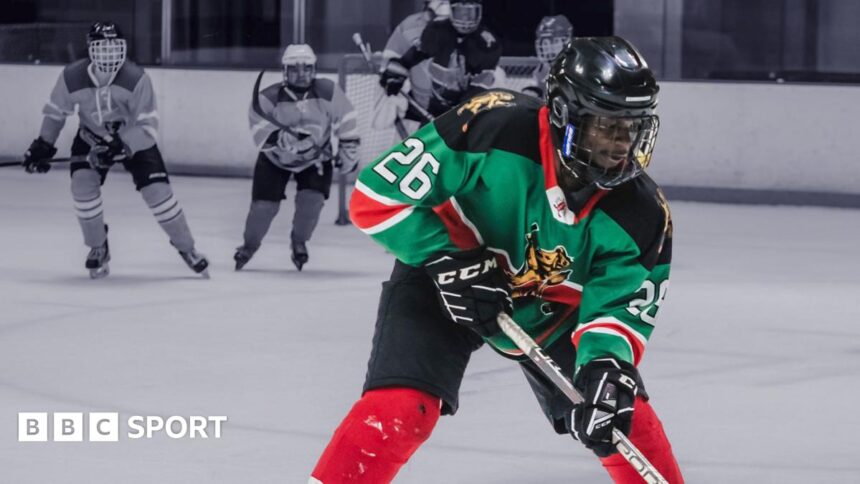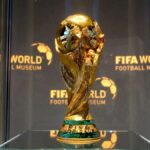Kenya have joined Algeria, Morocco, Tunisia and South Africa in the IIHF’s 84-member African cohort, but captain Mburu says the next step will prove the most difficult.
“We now have to reach the IIHF standards, and this is where our work is reduced [out]”, he explained.
But this is a team that has already overcome many challenges, including establishing themselves in a sport that is virtually unknown in East Africa.
The Ice Lions were started by a group of expats from the United States and Canada, who launched a recruitment drive.
With roller hockey becoming more accessible and popular in Kenya, many new members have been spotted wearing skates with wheels rather than blades.
Tim Colby, who has coached the Ice Lions since their inception, says love for the sport and dedication have brought the team to this point.
“Playing ice hockey on the equator is not easy,” the Canadian told the BBC.
“The biggest challenge is ice time. Access to ice is expensive.”
A single hour at the Panari Hotel ice rink costs nearly $100.
These high prices mean that the team can usually only train once a week.
Their home is also a quarter the size of an Olympic rink, so the Ice Lions are limited to playing four-on-four games (including goaltenders).
Full matches are played with six players and require a goalkeeper, two defenders and three attackers.
Colby adds that getting enough protective equipment for the team is proving difficult.
“We need a lot of specialized equipment and this is only available in Europe and North America,” he said.
In the early years, many players only wore shin guards, forgoing equipment such as helmets.
Replacing hockey sticks could also take several months.










